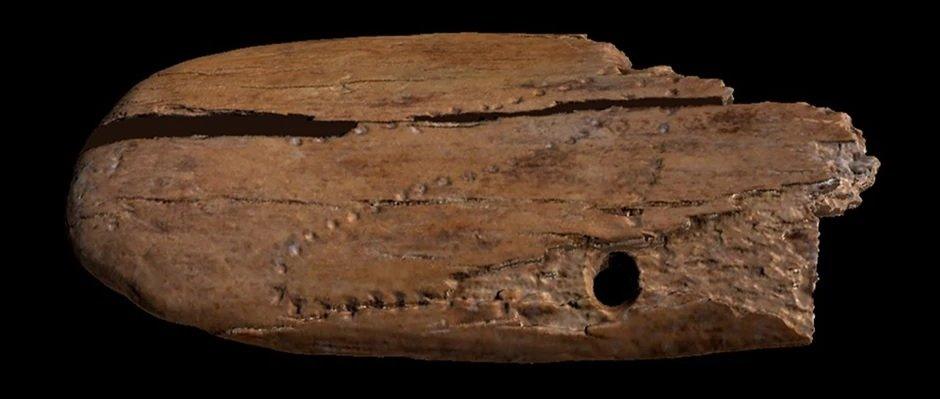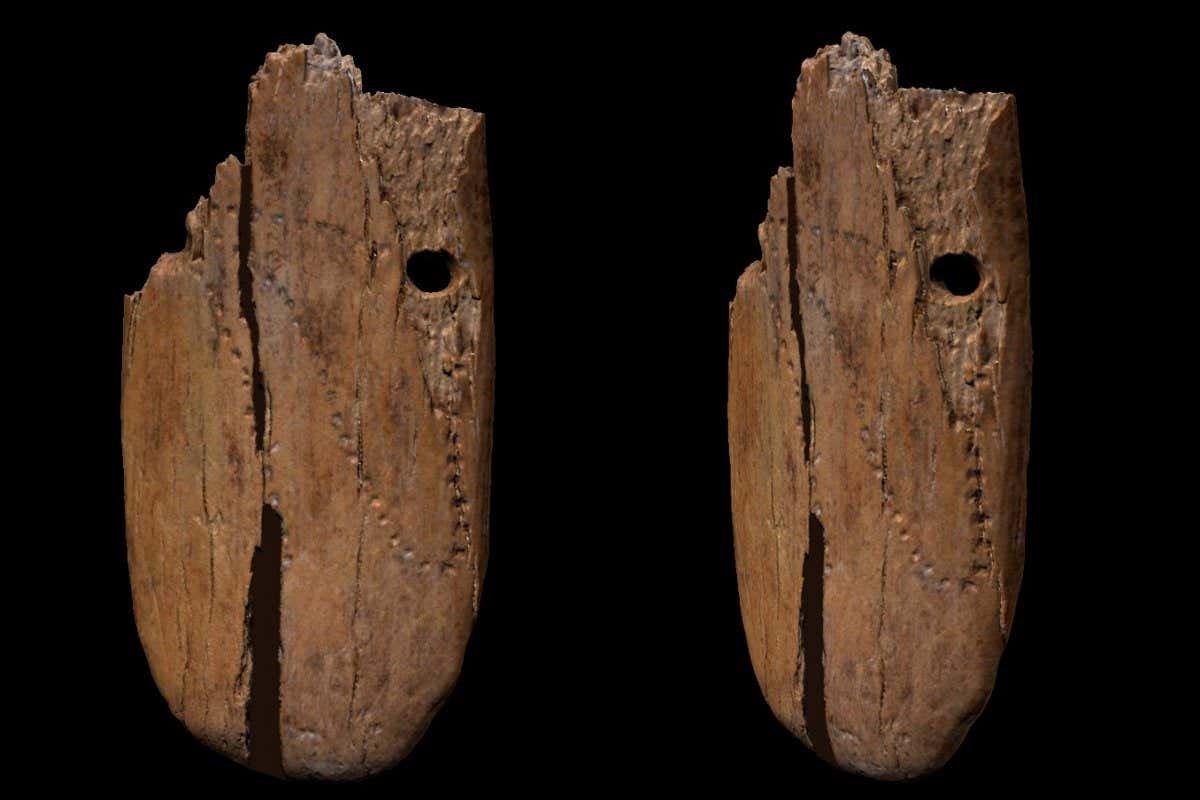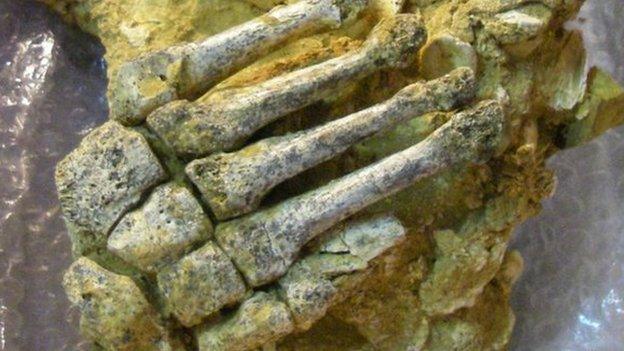Jewellery: Woolly mammoth tusk could be the oldest jewellery in the Europe
- Published
- comments

A decorated mammoth tusk carved over 40 thousand years ago has changed what we know about early humans in Europe say experts.
The tusk which has been cut to make a piece of jewellery was discovered in a cave in Poland in 2010.
The tusk is the earliest known example of decorated jewellery made by humans in Europe.
New research has revealed that the object is 41,500-years-old and means experts now believe humans were living in Europe earlier than they thought.
Carved into mammothivory - a hard, white material that some animals' teeth and tusks are made from - the pendant is decorated with puncture marks.
"The decoration of the pendant included patterns of over 50 puncture marks in an irregular looping curve, and two complete holes," the research team said.
They believe that each puncture mark could represent a successful animal hunts or cycles of the moon or sun.
The team also says the jewellery could now provide a clue as to when humans developed the intelligence for maths and astronomy and started to spread out to live across Europe.

Early humans in Europe
Humans, known as Homo sapiens, first emerged in Africa between 100,000 and 300,000 years ago, before spreading out to live in other parts of the world.
Before this latest discovery they were thought to have lived on the continent of Europe as recently as 30,000 years ago.
But the jewellery is at least 2000 years older than previous objects found in countries such as France and Germany.
Meaning experts now have a different date for the earliest possible time that humans lived on the continent.

A surprising discovery
Despite being in good condition for its age, the jewellery is very old and has been damaged over time, so the team used the newest 3D scanning and modelling technology to virtually reconstruct the pendant.
"This piece of jewellery shows the great creativity and extraordinary manual skills of members of the group," said Wioletta Nowaczewska one of the co-writers of the study from Wroclaw University in Poland.
Stajnia Cave is one of the best places for archaeological discoveries. During a period between 2006 to 2010 teams uncovered a number Neanderthal remains, which are an extinct species of humans, but Homo sapiens were not expected to have been at the site too and so early in history.
The team is now planning to carry out research on other ivory objects found at the cave.
- Published15 September 2021

- Published22 October 2021

- Published21 August 2014

